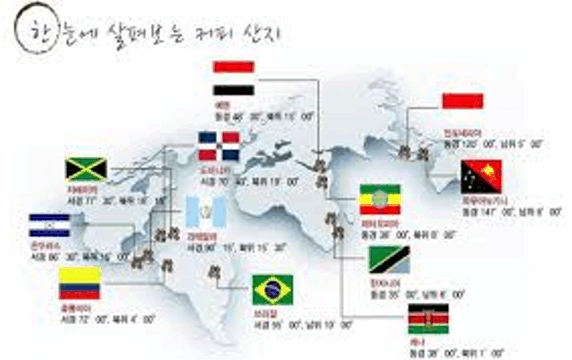기상청은 남은 여름 전망에 2월이 평년보다 따뜻할 것으로 예상
날씨 기자 Tyne Logan 작성
11시간 전 게시됨11시간 전, 3시간 전3시간 전에 업데이트됨
해변 해안에서 번개가 친다
퍼스는 41C의 폭풍우 이후 이번 주 돌발 홍수와 정전을 겪었습니다.(제공: Shane Taylor/ABC Weather Obsessed)
여름이 중반으로 접어들면서 이번 시즌은 폭우와 홍수, 북부의 장마 지연, 서부의 극심한 폭염 등 전국적으로 다양한 극한 현상을 겪었습니다.
빅토리아주와 남호주의 대부분은 이미 여름 내내 비가 내렸습니다.
서호주 서부의 대부분과 호주 열대 지방의 일부를 포함한 다른 지역에서는 해당 시즌에 정상적인 강우량을 받으려면 해야 할 일이 많습니다.
그렇다면 남은 여름 동안 무엇을 준비할 수 있을까요?
2월의 건조한 신호
불행하게도 대기의 특성으로 인해 다음 주 정도 이후에 계속될 구체적인 기상 현상을 정확하게 예측하는 것은 불가능합니다.
그러나 기상청(BOM)의 최신 장기 전망은 확률이 어떻게 쌓이는지에 대한 단서를 제공합니다.
1월 마지막 주부터 2월 3일까지 모델은 현재 호주 중부 및 동부 일부 지역을 통해 평소보다 습한 조건이 계속될 것으로 예상하고 있으며, WA의 서해안에서는 평소보다 건조한 조건이 계속될 가능성이 높습니다. .
그러나 2월에는 호주 북부 대부분 지역에 대한 전망이 더 건조한 신호를 선호합니다.
기상청의 2월 강수량 전망
2월은 동부를 제외한 호주 전역에 건조한 신호를 보이고 있습니다.(제공: 기상청)
이는 WA 북부 지역과 노던 테리토리에서 가장 두드러지며, BOM 기후학자 Caitlin Minney는 몬순 때문이라고 말했습니다.
“[전망]은 1월의 나머지 기간 동안 평균보다 습한 날씨를 선호하지만… 2월에 서쪽에 비가 내리는 것은 좋지 않습니다.”라고 그녀는 말했습니다.
“이는 2월까지 서반구에 있을 것으로 예상되는 매든-줄리안 진동(Madden-Julian Oscillation)의 예측 위치 때문일 가능성이 높습니다. 이는 일반적으로 호주 북부의 몬순 활동에 불리합니다.”
크고 어둡고 불길한 구름이 다윈 스카이라인 위에 걸려 있습니다
몬순이 늦게 시작되다가 마침내 호주 북부에 시작되었습니다.(ABC News: Dane Hirst)
그러나 동부 주와 WA 남부 일부 지역에서는 평소보다 더 습하거나 건조해질 위험이 거의 같습니다.
Minney씨는 이는 현 시점에서 총 강수량이 어느 쪽이든 갈 수 있다는 것을 의미한다고 말했습니다.
그녀는 “현재 많은 지역에서 매우 습한 곳에서 매우 건조한 곳까지 강우가 발생할 수 있는 범위가 다양합니다.”라고 말했습니다.
엘니뇨는 일반적으로 여름에 호주의 비에 영향을 주지 않고 긍정적인 인도양 쌍극자 현상이 이제 끝나가고 있기 때문에 이러한 불확실한 예측은 일반적인 패턴을 제어하는 강력한 기후 동인 없이는 흔히 발생합니다.
2023년 호주의 기후는 어떻게 쌓였나요?
세계는 방금 전 세계적으로 역대 가장 더운 해를 기록했습니다. 그런데 2023년 호주의 기후는 어땠나요?
2023년에는 화창한 날씨, 산불, 폭풍이 발생합니다
더 읽어보세요
Ms Minney는 평소보다 건조한 확률이 비가 전혀 내리지 않거나 보장되지 않는다는 점을 기억하는 것도 중요하다고 말했습니다.
“따라서 [강수량 전망에서] 갈색이나 노란색으로 나타나는 지역이라 할지라도 평균 이하의 강우량이 발생할 확률이 60% 또는 심지어 80%라고 해서 평균 이상의 강우량이 발생할 수 있다는 의미는 아닙니다. 그런 일은 일어나지 않는다”고 그녀는 말했다.
“과거에 폭풍우가 발생하여 총 강우량이 장기 예측과 다른 일이 발생했습니다.”
여름철은 호주 북부 및 중부, 퀸즈랜드 및 뉴사우스웨일스 대부분 지역에서 일년 중 가장 습한 시기입니다.
평소보다 따뜻한 전망
기온 예측의 경우 전망은 더 강한 신호를 나타냅니다.
1월 23일부터 2주 동안 전국 대부분 지역이 평년보다 시원할 것으로 예상됩니다.
사람들은 화창한 날 해변에 참석합니다.
지난 3개월은 호주 대부분 지역에서 평균적으로 평소보다 따뜻했습니다.(ABC News: Tabarak Al Jrood)
그러나 2월 최고 기온 전망에 따르면 전국이 거의 진한 적갈색으로 물들었습니다. 이는 한 달 동안 평균적으로 평년보다 더 따뜻할 가능성이 매우 높다는 것을 의미합니다.
Minney 씨는 “특히 최소값과 최대값 모두 비정상적으로 높은 최소값과 최대값을 가질 가능성이 4배 더 높기 때문에 이는 기록의 상위 20%에 해당하는 최소값과 최대값입니다”라고 말했습니다.
기상청의 2월 기온 전망
호주 전역의 거의 모든 지역이 올해 2월 최고 기온이 평년보다 높을 것으로 예상됩니다.(제공: 기상청)
미니 씨는 평소보다 더 따뜻해지는 확률의 가장 강력한 동인은 기후 변화와 태평양에서 여전히 진행 중인 엘니뇨라고 말했습니다.
오랫동안 장기 예보에서 보아온 평균보다 따뜻한 기온과 가을까지 지속될 것으로 예상되는 엘니뇨도 마찬가지입니다.”라고 그녀는 말했습니다.
2월의 장기 전망은 과거 기온에 대해 상대적으로 높은 정확도를 보였습니다.
그러나 강수량 예측의 성공률은 퀸즈랜드와 호주 북부의 높은 적중률부터 남부 WA, 남호주, 빅토리아, 뉴사우스웨일스 일부 지역의 낮은 정확도까지 전국적으로 다양합니다.
11시간 전에 게시됨11시간 전에 게시됨, 3시간 전에 업데이트됨
Bureau of Meteorology tipping a warmer-than-normal February in remaining summer outlook
By weather reporter Tyne Logan
Posted 11h ago11 hours ago, updated 3h ago3 hours ago
abc.net.au/news/australian-summer-outlook-january-february-bureau-of-meteorology/103310844Copy link
Link copiedShare article
Halfway into summer, the season has thrown up a range of extremes across the country — from heavy rainfall and flooding, to a delayed monsoon in the north and extreme heatwaves in the west.
Much of Victoria and South Australia have already received their entire summer’s worth of rainfall.
Other regions — including much of western Western Australia and parts of Australia’s tropics — have a lot of making up to do if they are to receive their normal rainfall for the season.
So what could be in store for the rest of the summer?
A dry signal for February
Unfortunately, due to the nature of the atmosphere, it is impossible to accurately predict the specific weather events that will play on beyond the next week or so.
But the Bureau of Meteorology’s (BOM) latest long range outlook gives a clue as to how the odds are stacked.
For the final week of January up to February 3, the models are currently tipping wetter-than-normal conditions to continue through parts of central and eastern Australia, while the run of drier-than-normal conditions is likely to continue for WA’s west coast.
But by February, a drier signal is favoured by outlooks for much of northern Australia.
This is most emphatic for northern parts of WA and the Northern Territory, which BOM climatologist Caitlin Minney said was due to the monsoon.
“While [the outlook] is favouring wetter-than-median conditions for the rest of January … it’s unfavourable for rain in the west going into February,” she said.
“This is likely due to the forecast position of the Madden-Julian Oscillation, which is predicted to be in the western hemisphere by February, which is typically unfavourable for monsoon activity over northern Australia.”
In the eastern states, however, as well as parts of southern WA, the risk of it being wetter or drier than normal is about even.
Ms Minney said it meant rainfall totals could go either way at this point.
“At the moment, many areas have a range of outcomes for rainfall that could be occurring from very wet to very dry,” she said.
This uncertain forecast is common without a strong climate driver controlling the general pattern, since El Niño typically does not impact Australia’s rain in summer, and the positive Indian Ocean Dipole event is now coming to its end.
How did Australia’s climate stack up in 2023?
Ms Minney said it was also important to remember drier-than-normal odds did not equal no rainfall at all, nor was it guaranteed.
“So even those regions that are coming up as brown or yellow [on the rainfall outlook], that sort of 60 per cent or even 80 per cent chance of below-average rainfall, that doesn’t mean that above-average rainfall can’t happen,” she said.
“It has happened in the past that there have been storms that has meant that the rainfall totals are different to the long-range forecast.”
The summer months are the wettest time of year for northern and central Australia, and much of Queensland and New South Wales.
A warmer-than-normal outlook
For temperature forecasts, the outlooks show a stronger signal.
Large portions of the country are expected to be cooler than normal for the two weeks starting January 23.
But February outlooks for maximum temperatures have nearly the whole country coloured in a deep maroon, meaning it is very likely to be warmer than normal, on average, across the month.
“Notably, for both minimums and maximums, it is four times more likely to have unusually high minimum and maximum temperatures, so those are minimums and maximums in the top 20 per cent of records,” Ms Minney said.
Ms Minney said the strongest driver of the warmer-than-normal odds were climate change, and El Niño, which was still underway in the Pacific.
“So climate change is the main driver of the warmer-than-average temperatures that we’ve been seeing on long-range forecasts for quite a while, as well as the El Niño, which is predicted to persist into autumn,” she said.
The long-range outlooks for February have had a relatively high accuracy in the past for temperature.
But the success rate for rainfall prediction varies across the country, from a high hit-rate in Queensland and northern Australia, to low accuracy over southern WA, and parts of South Australia, Victoria and New South Wales.
Posted 11h ago11 hours ago, updated 3h ago










